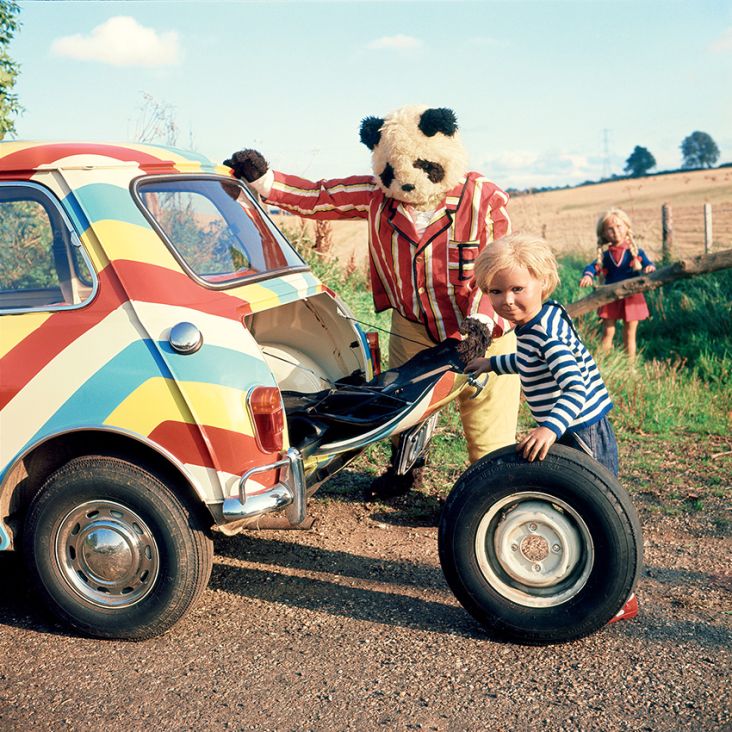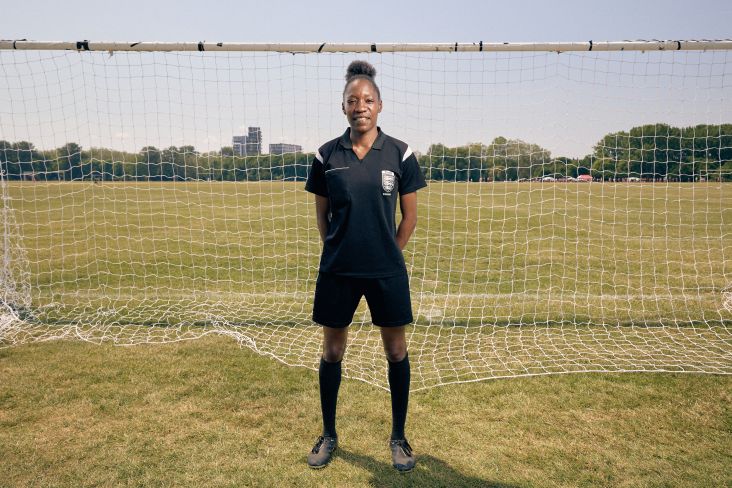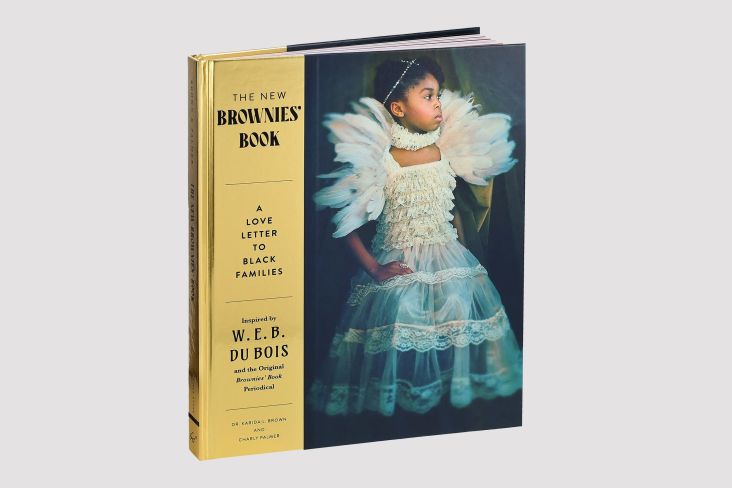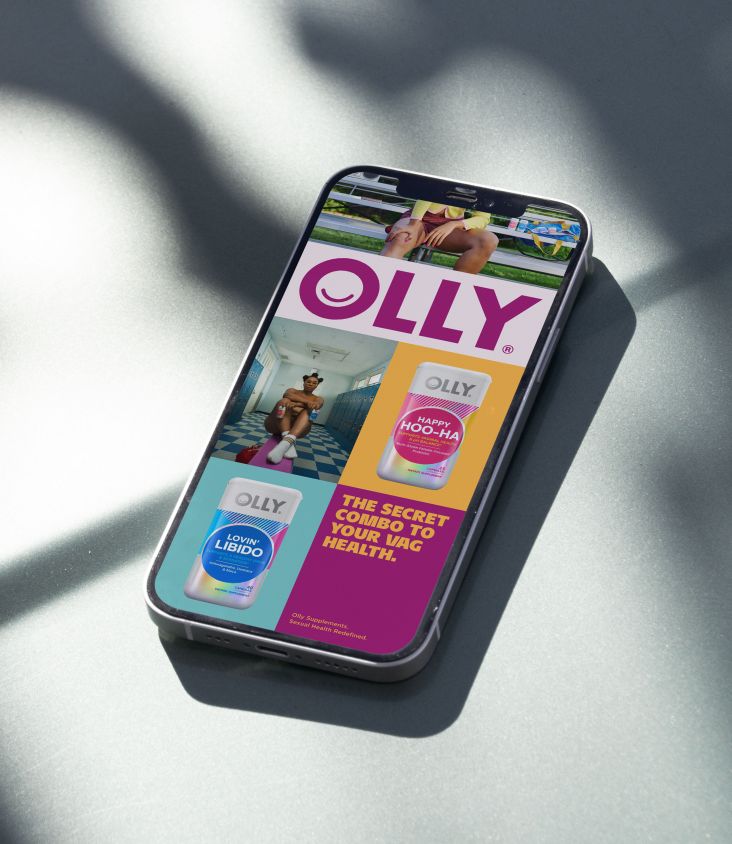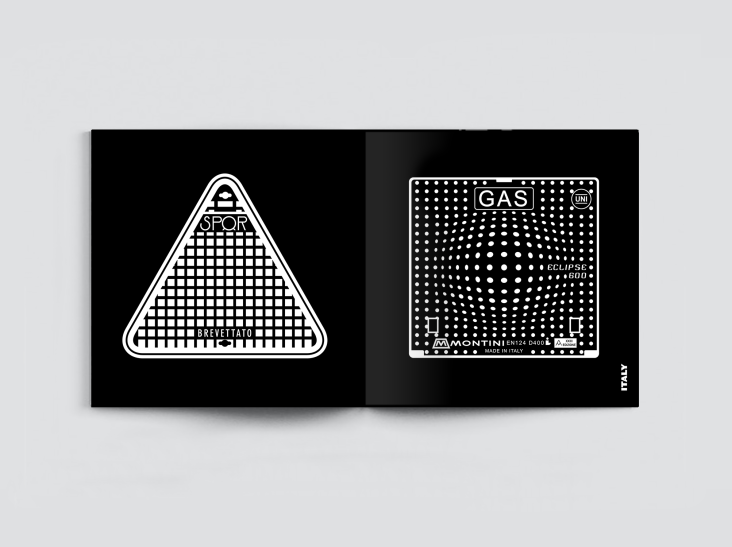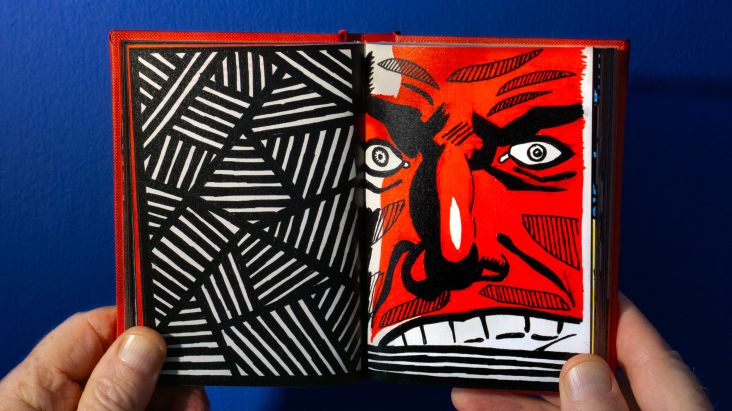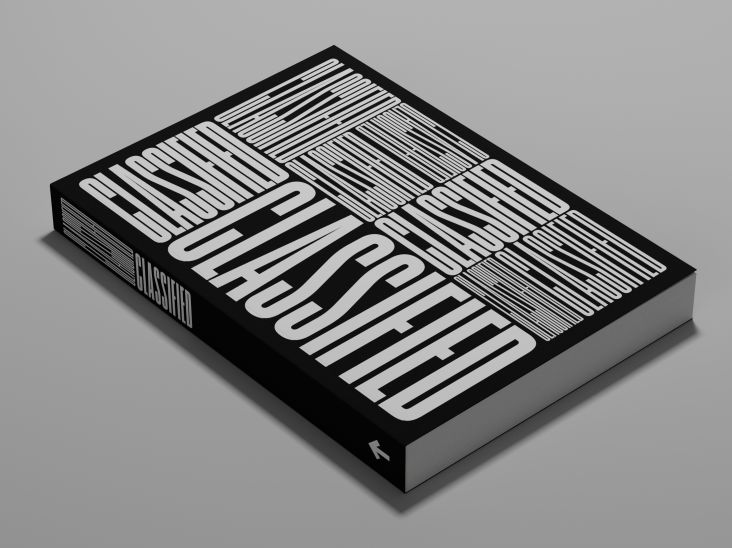Hardcore: The Cinematic World of Pulp is a beautiful book every designer will love
You don't have to be a fan of Pulp to enjoy this gorgeously designed book: if you're nostalgic for the '90s or just a fan of great design, you'll love it, too. We sat down with authors Paul Burgess and Louise Colbourne to learn how they put it together.
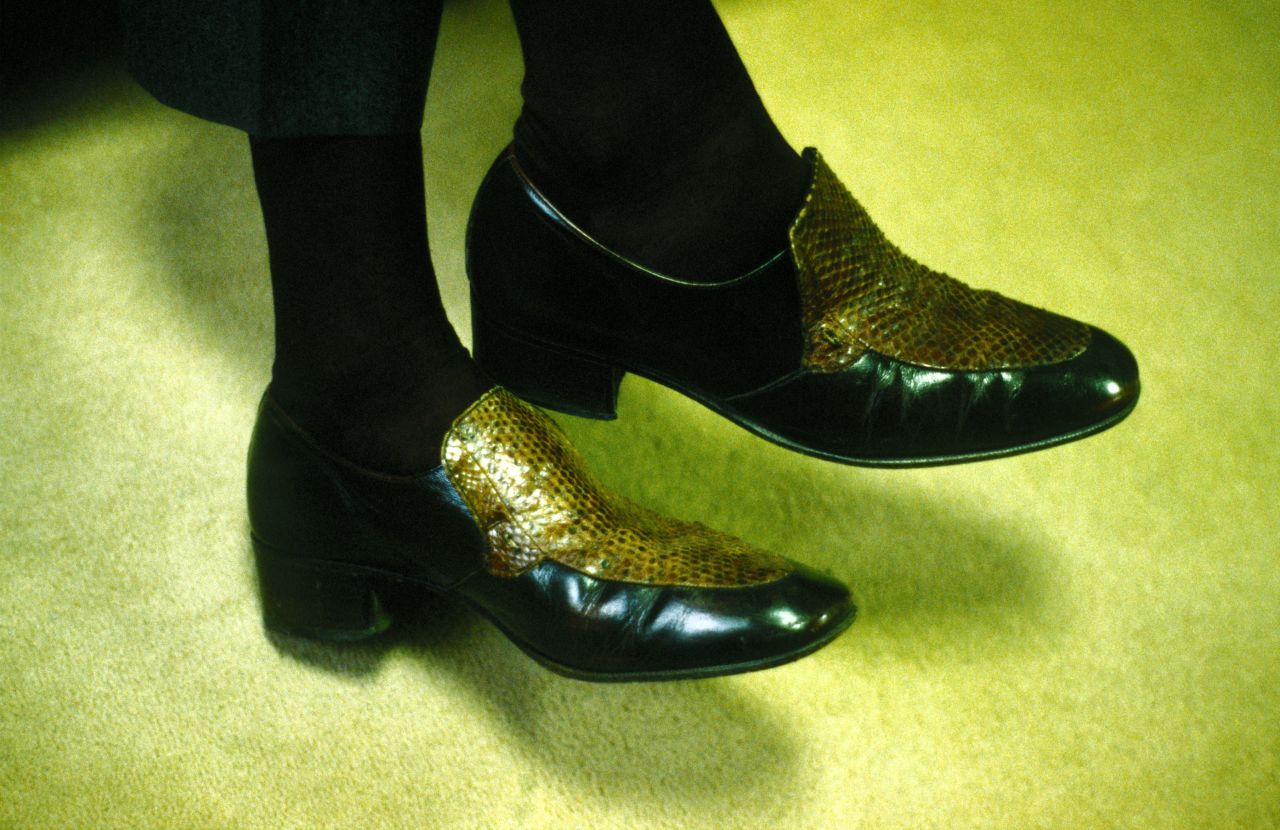
Jarvis Cocker’s shoes – ‘This Is Hardcore’ video shoot – Pinewood Studios – Feb 1998. Photograph by Paul Burgess.
For those of us who lived through them, the '90s were golden years for indie rock. It was a time when, culturally, anything seemed possible. And perhaps more than any other band, that spirit was encapsulated by Pulp.
Formed in Sheffield in 1978 and fronted by Jarvis Cocker, they'd forged a reputation as arty, obscure and weird. Then suddenly, in 1995, their album Different Class hit number one and spawned four top 10 hits, including Common People and Sorted For E's and Whizz.
This trajectory, in itself, is not unusual. But in 1998, they confounded the music establishment by rebelling against their very own success. The result was the defiant and uncompromising This Is Hardcore, an album which alienated many fans at the time but is now viewed as a true classic.
This year, to mark its 25th anniversary comes the new book Hardcore: The Cinematic World of Pulp: a lush visual celebration featuring unseen photography, behind-the-scenes interviews and other essays. Quite frankly, this book is so beautifully designed that even if you're not interested in Pulp or 90s culture, you'll fall in love with it. We sat down with authors Paul Burgess and Louise Colbourne to find out more.
Unseen images
Paul spent the mid-to-late 1990s documenting Pulp at Jarvis Cocker's invitation, taking photographs during video shoots, live gigs and other events. Accordingly, Hardcore: The Cinematic World of Pulp contains a candid selection of previously unseen images of the band, behind the scenes and on set, of the four main video shoots made to promote the album: Help the Aged, This Is Hardcore, A Little Soul and Party Hard.
And these were very different from the kind of posed scenes you might expect. "I photographed the band for about five years," says Paul. "And they gave me access whenever they did a video shoot or play live. I'd often photograph their shoes, hands, or things lying around, which are often more interesting than just portraits."
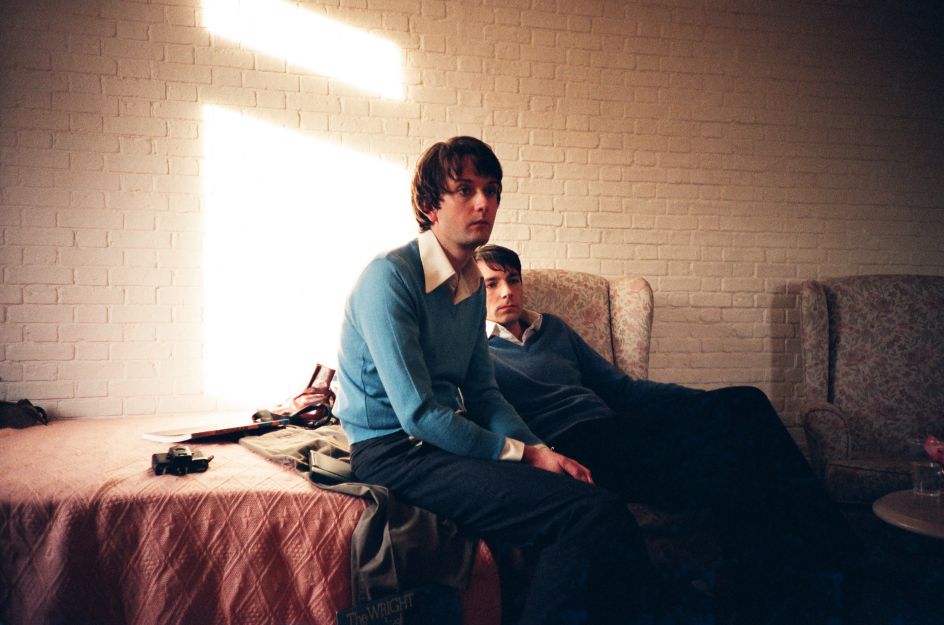
Jarvis Cocker + Steve Mackey – ‘This Is Hardcore’ video shoot – Pinewood Studios – Feb 1998. Photograph by Paul Burgess.
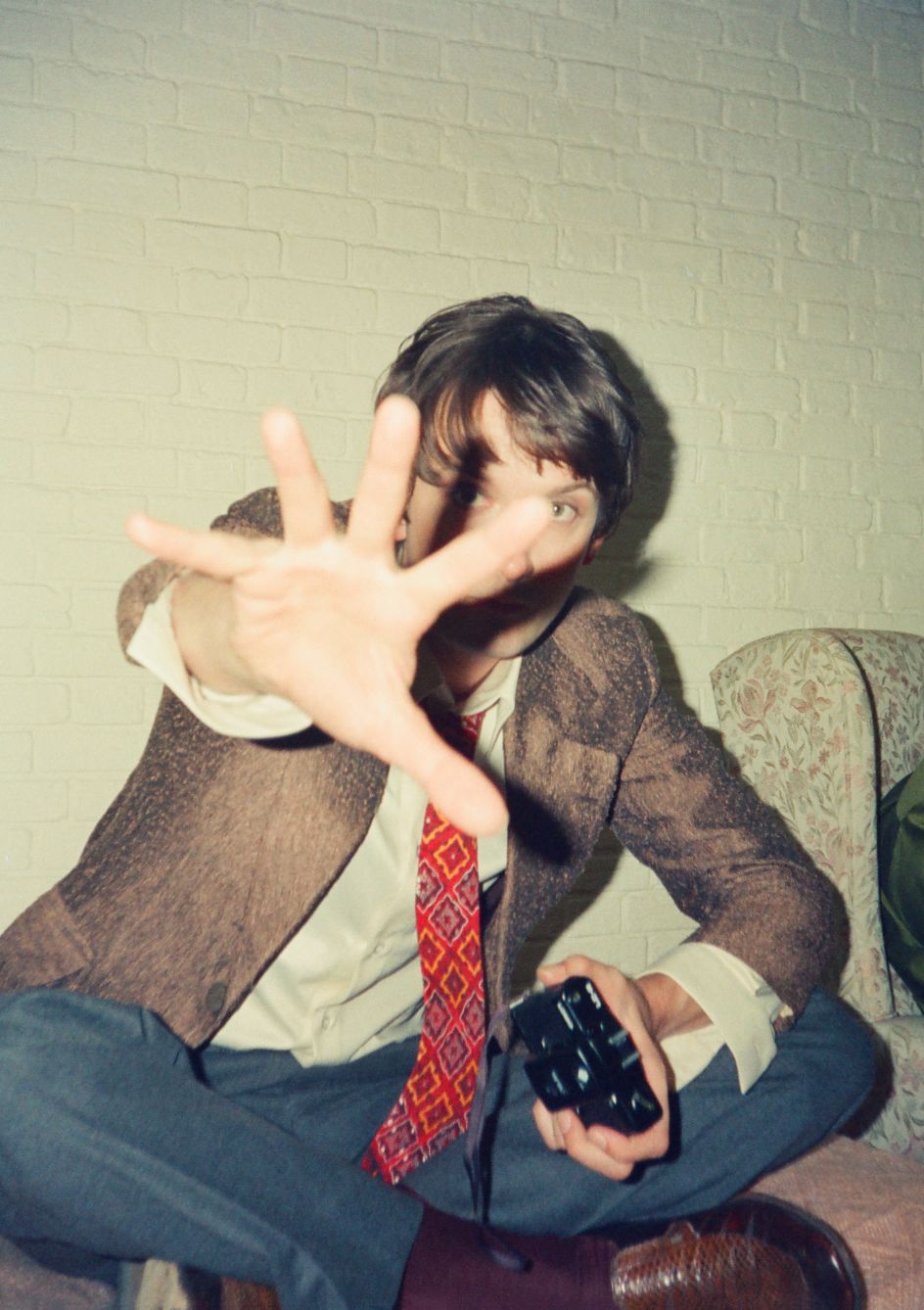
Jarvis Cocker – ‘This Is Hardcore’ video shoot – Pinewood Studios – Feb 1998. Photograph by Paul Burgess.
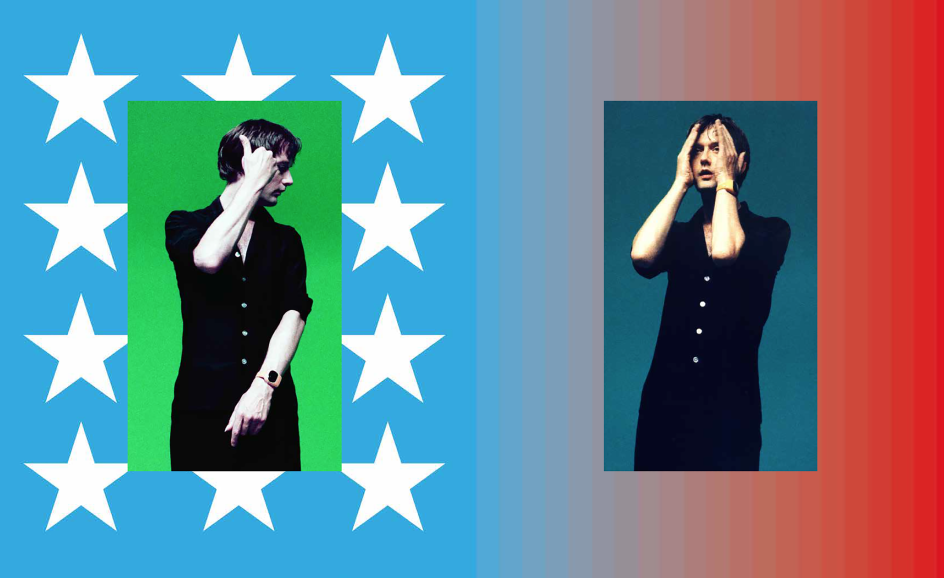
Jarvis Cocker – ‘Party Hard’ video shoot – Asylum Studios, Perivale. August 1998. Photography by Paul Burgess. Star design by Alexa Vieira
This offbeat approach sat comfortably with what was quite an offbeat album. "The music video for This Is Hardcore is basically a fictional account of an unsuccessful B-movie actor in 1950s Hollywood who disappeared before completing any major films," Paul explains. "The music video, directed by Doug Nichol, was the film-that-could-have-been, patched together from outtakes and unfinished scenes." The album plays like a movie, a series of scenes from life.
Extraordinary music requires an extraordinary book, and Paul and Louise have delivered just that. Often, music books are a little uninspiring when it comes to layout and design. As you can see from the gorgeously designed spreads here, though, the authors have put their heart and soul into Hardcore: The Cinematic World of Pulp.
Cinematic side
"As a visual starting point, we were inspired by the music video, which itself drew inspiration from a book of Hollywood star portraits from the 1940s to 1960s called Still Life, created in 1983 by Diane Keaton and Marvin Heiferman," explains Paul. "We were also drawn to the artwork for the album, created by graphic designer Peter Saville and the American painter John Currin."
"It's unusual to have a painter involved in design," adds Louise. "But Jarvis Cocker and other band members are very interested in film, art, and design. Jarvis went to film school at Central St. Martins. Steve Mackey, the bass player, also went to film school as well as the Royal College of Art. And Mark Webber, Pulp's guitarist, runs the Visible Press, which publishes books on cinema and writings by filmmakers. So, there is a cinematic side to Pulp. And we hope our book will be of interest, not only for Pulp fans, but also for fans of design and cinema too."
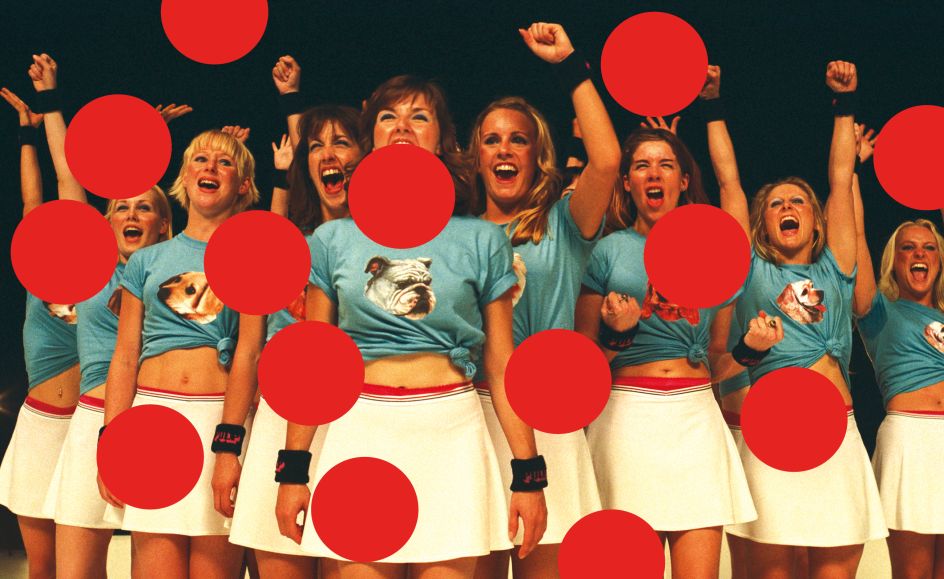
Dancers – ‘Party Hard’ video shoot - Asylum Studios, Perivale. August 1998. Photography by Paul Burgess.
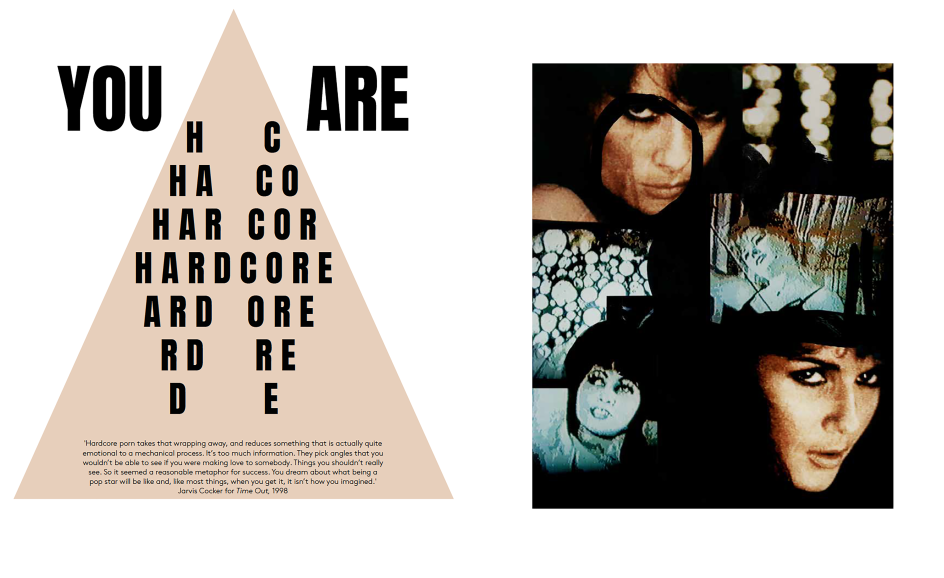
You Are Hardcore – design by Louise Colbourne. Photo montage by Paul Burgess.
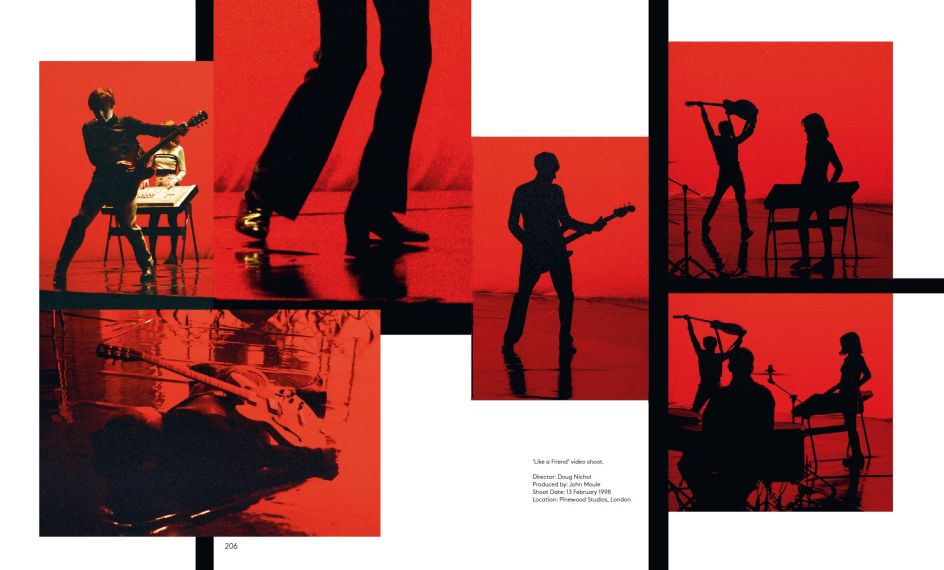
Pulp Montage – ‘Like a Friend’ video shoot – Pinewood Studios – Feb 1998. Photography by Paul Burgess.
Combining all these disparate elements might sound like a headache, but Paul and Louise instead saw it as a real opportunity to create something special. "We didn't want to produce a boring coffee table book, where it's two pages of text then 200 pages of photographs without any information," says Louise. "We wanted to make something we were both happy with."
That meant putting in the time and effort to go through Paul's vast archive, containing thousands of 35mm slide photographs of the band, scan them in, and whittle them down to a chosen few. It also meant commissioning a variety of essays that explained the context behind the album and images and added extra insights.
For these sections, the authors gathered contributions from Doug Nichol, John Currin, Peter Saville, Stephen Mallinder, Sergei Sviatchenko, John Stezaker, Candida Doyle, Martin Green, Pat and Jo Skinny and Florian Habicht, all of whom have a connection to the album, the band or the era. The book also includes visual responses from a selection of younger artists and designers, such as Alexa Vieira, who have been inspired by Burgess's photographs and the band's legacy.
Time capsule
At the heart of the project, though, are Paul's photos, and they prove quite the time capsule in the world of 2023. "At the time the photographs were taken, all on analogue 35mm film, it was pre-digital and just before cameras on mobile phones came in," Paul points out. "The internet was this new thing. There was certainly no social media: it hadn't even been invented. And I can't remember anyone else taking photographs on any of the video shoots I went on."
All this and more comes through effortlessly in this wonderfully realised book, and the timing of its release has proved fortuitous. "Just by pure chance, Pulp decided to reform and play concerts this year," notes Louise. "We didn't know that would happen, so that's been a massive bonus."
Pulp fans and '90s nostalgia-heads, in particular, will relish insights into what was not just an iconic album but a cultural moment in time.
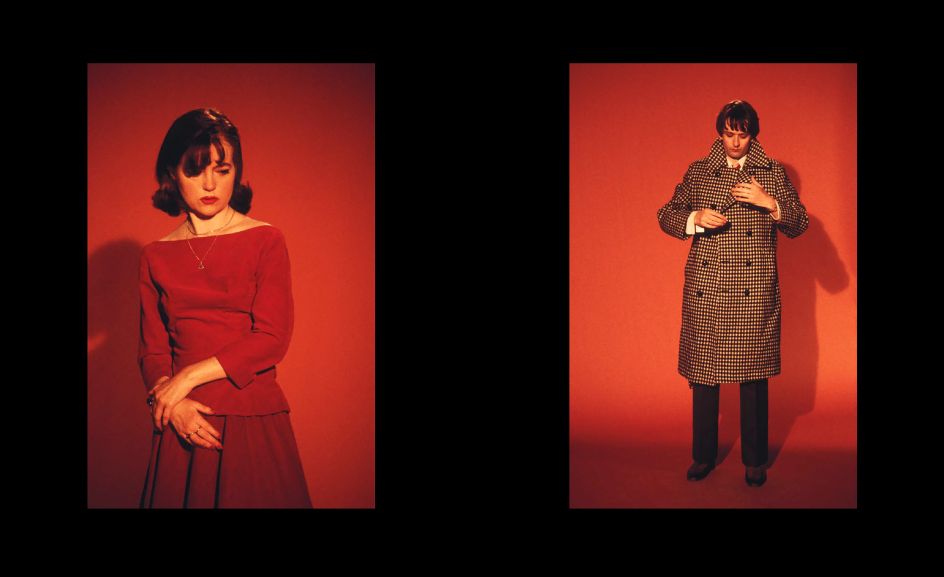
Candida Doyle + Jarvis Cocker - ‘This Is Hardcore’ video shoot – Pinewood Studios – Feb 1998. Photographs by Paul Burgess.
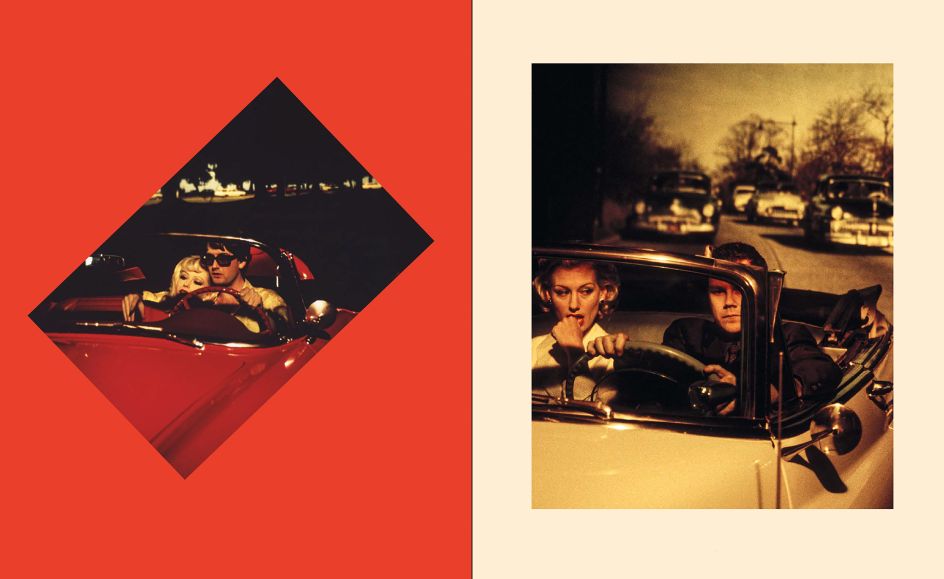
In Cars – Jarvis Cocker & Ksenia Zlobina – Nick Banks & Jan Marie von Giebelhausen. ‘This Is Hardcore’ video shoot – Pinewood Studios – Feb 1998. Photographs by Paul Burgess.
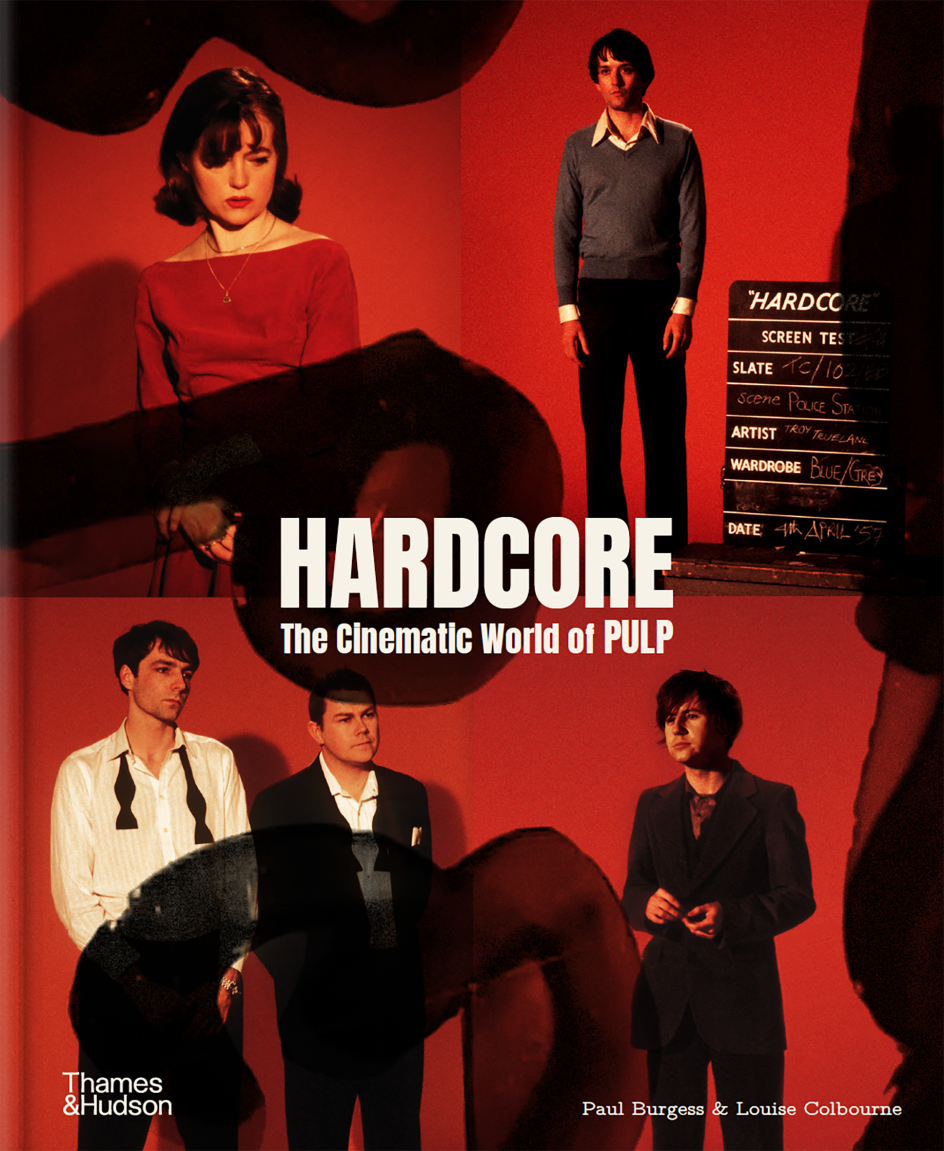
"This Is Hardcore was an album that Pulp made after the huge success of Common People and Different Class, and they suddenly realised they felt very uncomfortable with the fame that came with that success," explains Paul. "Jarvis hated being in the spotlight, unable to do what he wanted without the public glare. So this album was made in response to those pressures.”
"In some ways, it's quite a dark album. For instance, the opening song called The Fear is about panic attacks and anxiety. But it's also a very life-assuring album because there are songs like Glory Days, which is kind of celebrating, looking back at all the fun they'd had, a sense of rebirth. It's not all dark, and parts of the album are quite sexually charged. Another song called Seductive Barry, originally called ‘Love Scenes’, is inspired by Barry White and their love of his music. So it's an album that works on many, many levels.
"We've talked to many Pulp fans over the years," he adds, "and many people now say it's their favourite album. They often say, 'Well, I didn't really get it at the time, but I listen to it so much now, and I've completely fallen in love with this album, and it's the one I play the most.' So we really wanted to reflect that passion in our book."
Hardcore: The Cinematic World of Pulp is published by Thames & Hudson, and is available to buy now.










](https://www.creativeboom.com/upload/articles/86/862919952c0ad18439004228895a431dc6e45ffc_732.jpg)




